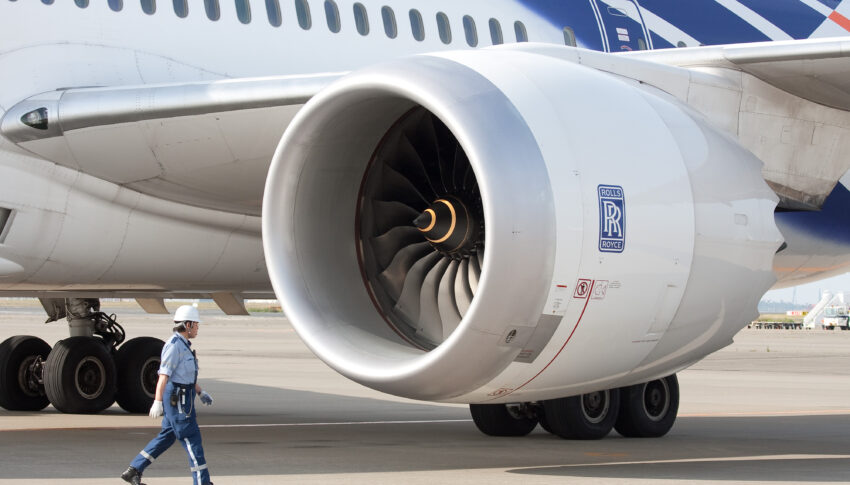Being able to accurately monitor and safely manage engines, predict their future behaviour, and provide efficient just-in-time maintenance, is crucial for all aircraft operators. Kenza Assanioussi, engine health monitoring engineer at StandardAero, describes the pursuit of this ultimate goal to Bernie Baldwin.
Hindsight is a wonderful thing, so they say. It invariably offers insightful clarity, the fabled 20:20 vision. “If only we’d known”.
But what if it was possible to have something akin to ‘20:20 foresight’? Forecasting the future is a notoriously difficult task at the best of times, but in the field of aero engine health monitoring, that’s the aim. Even getting close though, will enable engines to stay on wing for as long as possible – and ultimately deliver greater revenues for operators.
Meaningful engine health monitoring (EHM) is the objective, and it requires a number of elements to help the operator’s maintenance team to keep track of how well the powerplant is operating. But first there needs to be choices made regarding which of the assorted metrics need to be examined most closely.
Kenza Assanioussi, engine health monitoring engineer for independent MRO specialist provider StandardAero at its Gonesse facility in France, describes those key factors.
“For turboprop engines, the main parameters that are analysed for health monitoring are inter-turbine temperature (ITT), fuel flow, compressor speeds [N1 & N2 – respectively the speeds of the low pressure and high pressure spools], propeller RPM, torque and oil consumption in cruise,” she explains. “For turbofan engines, the main parameters are exhaust gas temperature (EGT), fuel flow, compressor speeds, shaft vibration, oil pressure and oil temperature in cruise, plus the EGT margin and thrust derate at take-off power.”
With all the necessary sensors in place, the next task is to select the optimum method required to transfer the accrued data to the airline for examination, taking into account the cost of data transmission. Data from some of the variables monitored might not need to be sent in real-time, so significant cost savings can be made there.
“The means of data transmission associated with EHM depends on the operator,” Assanioussi reports. “For some airlines, the data can be sent in real time using the aircraft’s ACARS digital datalink system, or alternatively using Pratt & Whitney Canada’s FAST (Flight data Acquisition Storage and Transmission) system. For other airlines, the data is manually downloaded post-flight from the aircraft’s EHM system.
“After analysing the data obtained from an EHM platform, we then email the operator a report highlighting key findings, either on a weekly, monthly or quarterly basis, depending on the level of aircraft utilisation,” she adds.
When an anomaly arises and categorised, it has to be evaluated for its seriousness and an appropriate solution suggested.
“While the EHM platform provides the data which allows an anomaly to be identified and assessed, it is up to trained EHM analysts – such as those in our EHM team here at Gonesse – to review the data and analyse the engine’s parameters,” Assanioussi confirms. “The analysts then update the engine’s status accordingly and report any deviations to the operator, along with operational recommendations, which might include immediate borescope inspections (BSIs) or – in extreme cases – engine removals, depending on the anomaly identified.”
Assanioussi points out that StandardAero is the only Pratt & Whitney Canada (P&WC) Designated Overhaul Facility (DOF) also approved as a CAMP Systems ECTM (engine condition trend monitoring) Designated Analysis Center (DAC), and provides ECTM data analysis support for the entire P&WC family of engines.
“We also provide EHM data analysis support for the CFM56-5A/-5B through a CFM Engineering License, and provide trend monitoring services for a large number of additional powerplants including the CFM56-7B, GE Aviation CF34-3/-8 & CF6-50/80 and IAE V2500,” the specialist engineer notes.
With the amount of data being moved around between engines, aircraft, EHM departments and operators, this is a discipline seemingly ripe for digitalisation (including AI and machine learning). Though not yet occurring at StandardAero, Assanioussi agrees that an increased digital presence in such systems is on its way, but also emphasises the value of the human in the process.
“While AI might one day play a role in EHM data analysis, the process currently relies on experienced data analysts who are able to fully understand what any anomalies mean, and to make operational recommendations accordingly,” she comments. “For example, an engine’s parameters might be out of range due to a flight condition change or a recording error. The EHM system will automatically detect and note such fluctuations as a problem, and it is therefore up to the EHM analysts to determine whether a problem really exists, or whether the system is instead reporting a false alert which could lead to unnecessary aircraft downtime, and/or serious financial losses if not correctly assessed.”
Even though greater digitalisation of EHM is still in its early stages, the value from using the current systems for predictive analysis is considerable. The ability to have parts such as line replaceable units (LRUs) waiting at the gate to enable swift exchange for worn or damaged parts, can make a huge financial difference to an airline. Turnarounds can be kept within the scheduled timeframes, and the aircraft dispatched on time.
An on-time departure, with the aircraft taking to the air to create more revenue, is precisely the sort of 20:20 vision airline engineers and accountants love to see.
Author Bernie Baldwin
Published 1st December 2022
Image Copyright Rolls-Royce




